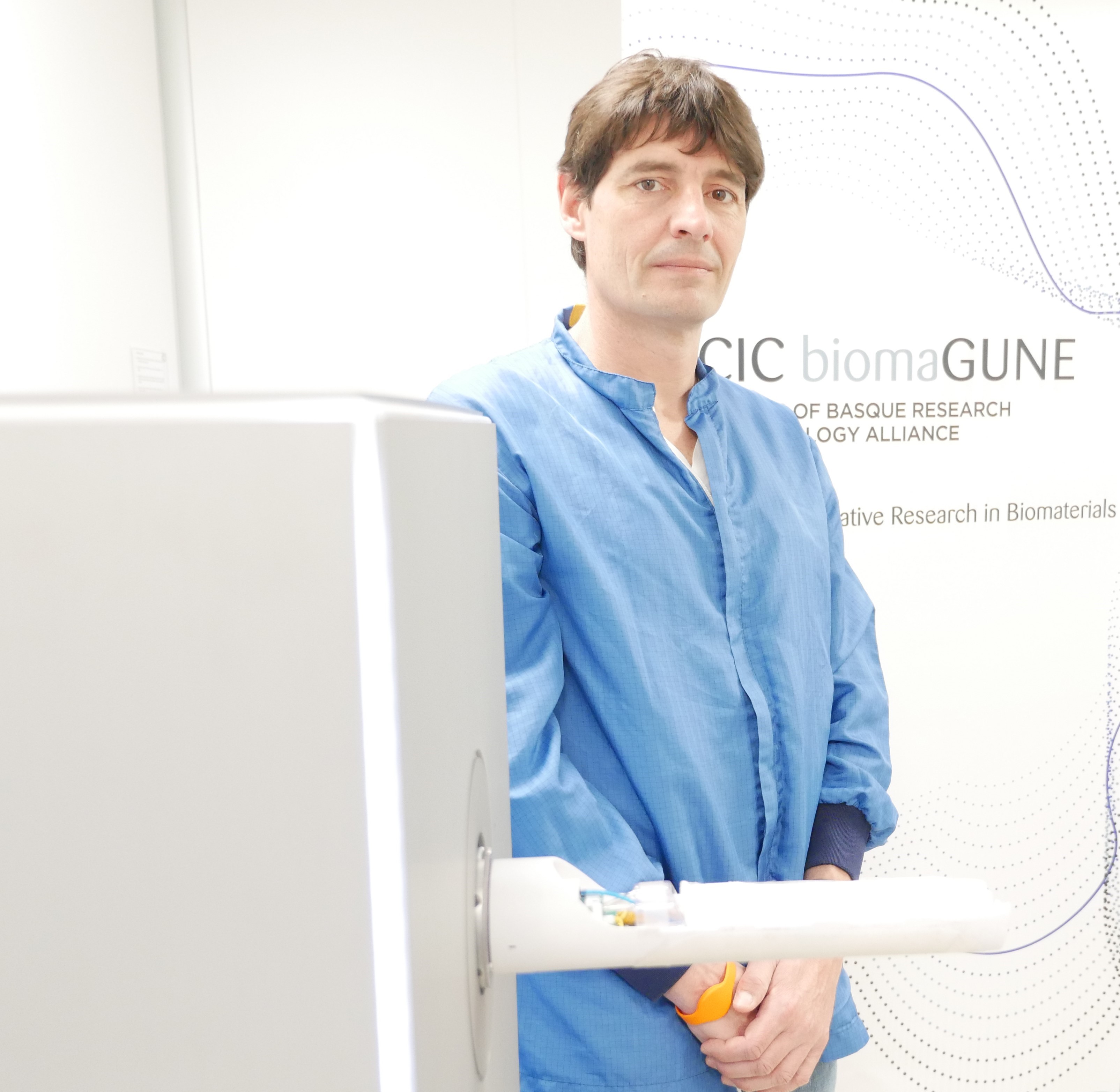Donostia-San Sebastian. 18 July, 2024. Doctor Jordi Llop, senior researcher in CIC biomaGUNE’s Radiochemistry and Nuclear Imaging Laboratory, has been appointed president of the European Society for Molecular Imaging (ESMI). The ESMI, which is celebrating its 20th anniversary, currently has over 1,400 associated professionals from the field of molecular imaging, working in Europe, America and Asia. The society represents the scientific community working in various disciplines of molecular imaging “in order to see, non-invasively on the whole, what is happening at the molecular or functional level inside a living organism under both normal and pathological conditions”, explained Llop, an expert in the development of new imaging agents.
Molecular imaging is a very broad field, including basic, preclinical, translational and clinical research. “It is used to find out what is happening at the molecular level within an organism, and its applications include, for example, the diagnosis of diseases, the investigation of pathophysiological phenomena associated with them, or the evaluation of treatment response. Molecular imaging has applications in a wide range of diseases, such as cancer, neurodegenerative, respiratory, cardiovascular, infectious or musculoskeletal diseases.” The primary function of the ESMI is to integrate all imaging modalities and related disciplines to stimulate interdisciplinary partnerships, with the ultimate goal of transferring knowledge gained from experimental imaging studies to the clinical setting.
As Llop sees it, “the scientific community is currently tackling increasingly complex problems. The biomedical environment needs the collaboration of expert personnel with a huge range of expertise to undertake ambitious projects. Collaboration is essential, and the ESMI works to provide this community with tools to exchange information and foster their collaboration”. In this respect, the society is organizing its 20th European Molecular Imaging Meeting to be hosted in Bilbao in March, 2025.
Llop believes that the presidency of the ESMI can help “to put not only our research group, but also CIC biomaGUNE and the Basque Country on the molecular imaging map of Europe and the world”. And he is also keen to highlight CIC biomaGUNE’s Molecular Imaging Facility, recognized by the Spanish Ministry of Science, Innovation and Universities as a Singular Scientific and Technological Infrastructure (ICTS) in biomedical imaging, which “constitutes one of the largest preclinical imaging research infrastructures in Europe. The same facility houses all the imaging techniques, a cyclotron and a radiochemistry laboratory where all types of contrast agents and tracers for on-site research can be produced. This gives us great flexibility and a rapid response capability enabling us to tackle studies”. By way of an example of the work being carried out, Llop highlights some of the projects in which the laboratory he directs is working, and which provide clear evidence of the possibilities offered by molecular imaging.
Nanorobots to fight cancer
In one of the projects, with funding from the "La Caixa" Foundation, they study “how nanorobots, or small nanoparticles with the ability to move on their own in certain media, are capable of accumulating in a bladder tumor. Using molecular imaging techniques, we have shown that they end up accumulating in the tumor, and that when loaded with a specific drug, the tumors are reduced by up to 90% in mice”, he explained. The study of brain tumors from metastatic breast cancer is another focus of their work: “We are trying to see whether the drugs administered build up in the metastasis and can serve as a therapy.”
Markers to study pulmonary ventilation
The team has also developed a pulmonary ventilation marker. It is “a radioactively labeled gas that serves as a contrast; when inhaled, it is distributed in the lung so you can see how far it goes and can tell whether the lung is well ventilated or which regions of the lung are not well ventilated”, explained Llop. This marker is in the preclinical phase, and the researcher is optimistic: “We are optimizing production to make it compatible with good manufacturing practices and safe in terms of patient administration,” he added.
Evaluation of Alzheimer's disease treatments
Another project, funded by the Spanish Research Agency, is related to Alzheimer's disease. Molecular imaging is used to look at certain processes that occur during the development of Alzheimer's. “In animal models we evaluate various therapies, based on the stabilization of a certain protein, which could then be applied in humans to monitor the disease or stop it developing.”

